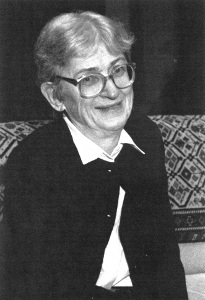Helene J. Kantor facts for kids
Quick facts for kids
Helene J. Kantor
|
|
|---|---|

Kantor in 1989
|
|
| Born | 1919 |
| Died | January 13, 1993 |
| Alma mater | University of Chicago |
| Awards | Percia Schimmel Archeological Prize |
| Scientific career | |
| Fields | Archeology, art history |
| Institutions | University of Chicago Oriental Institute |
| Thesis | (1945) |
Helene J. Kantor (born July 15, 1919 – died January 13, 1993) was an important American archaeologist and art historian. She studied ancient cultures in the Near East. Helene worked at the University of Chicago Oriental Institute. She is most famous for her discoveries at a place called Chogha Mish between 1961 and 1978.
Helene's Early Life and Learning
Helene Kantor was born in Chicago in 1919. She had a rare muscle condition that affected her activities. Her father, Jacob Robert Kantor, was a psychologist.
Helene went to Indiana University. She earned a bachelor's degree in Zoology and Biology when she was 19. Later, in 1945, she received her Ph.D. from the University of Chicago.
Discoveries and Research
Even while she was still a student, Helene started publishing her work. In 1944, she wrote an article about ancient Egyptian culture. It was called "The Final Phase of Predynastic Culture, Gerzean or Semainean."
Her most well-known book came out in 1947. It was titled The Aegean and the Orient in the Second Millennium B.C. In this book, Helene showed how the art of two different ancient civilizations was connected.
Helene's main work was at Chogha Mish. This was an important archaeological site. She also helped save another nearby site, Chogha Bonut, from being destroyed. She led two seasons of digging there in 1976 and 1977.
Awards and Special Honors
- In 1984, Helene Kantor received the Percia Schimmel Archeological Prize. The Israel Museum gave her this award for all her amazing work.
- In 2004, the Archaeological Institute of America created a special lecture series. It is called the Helene J Kantor Memorial Lecture, honoring her memory.

